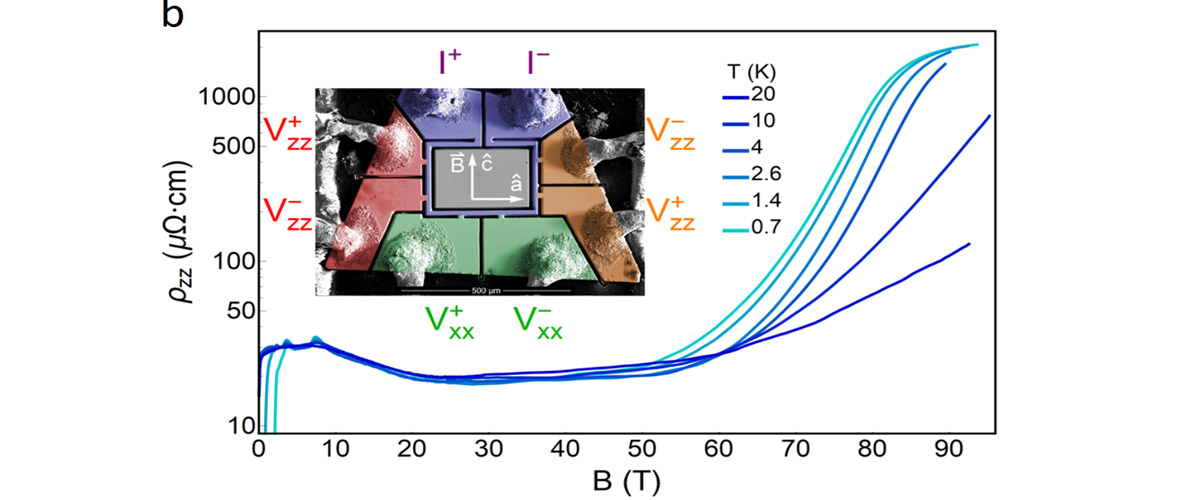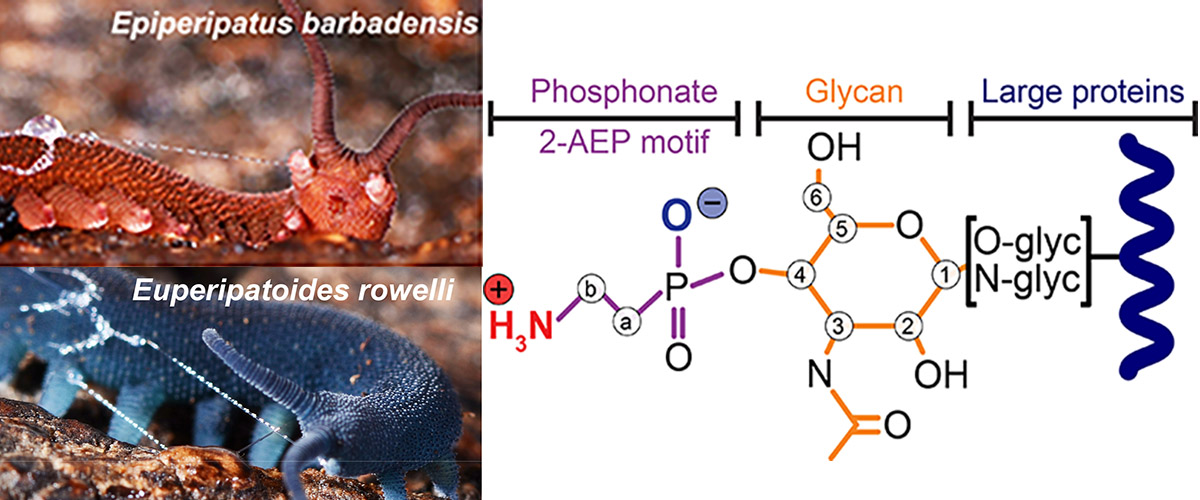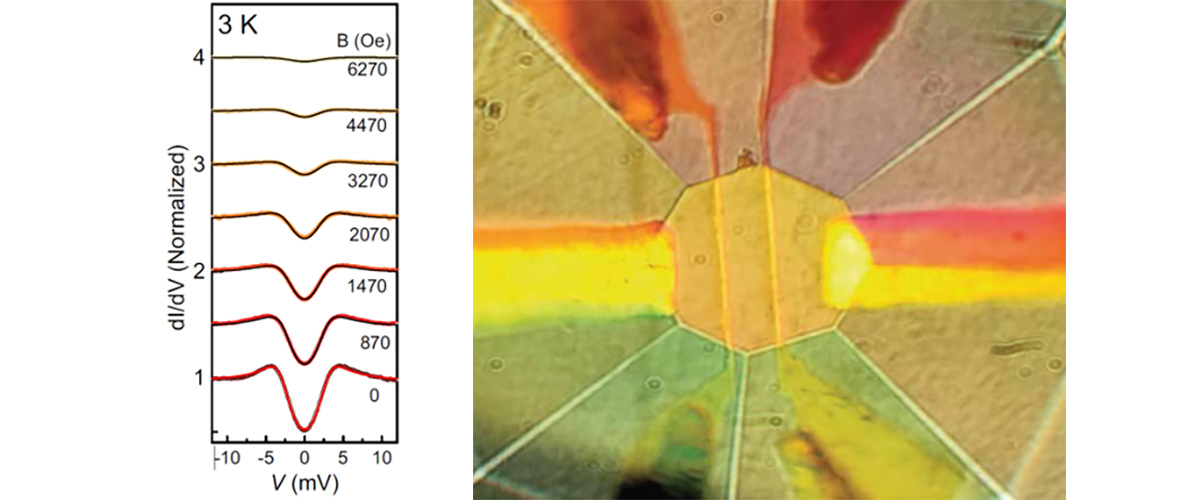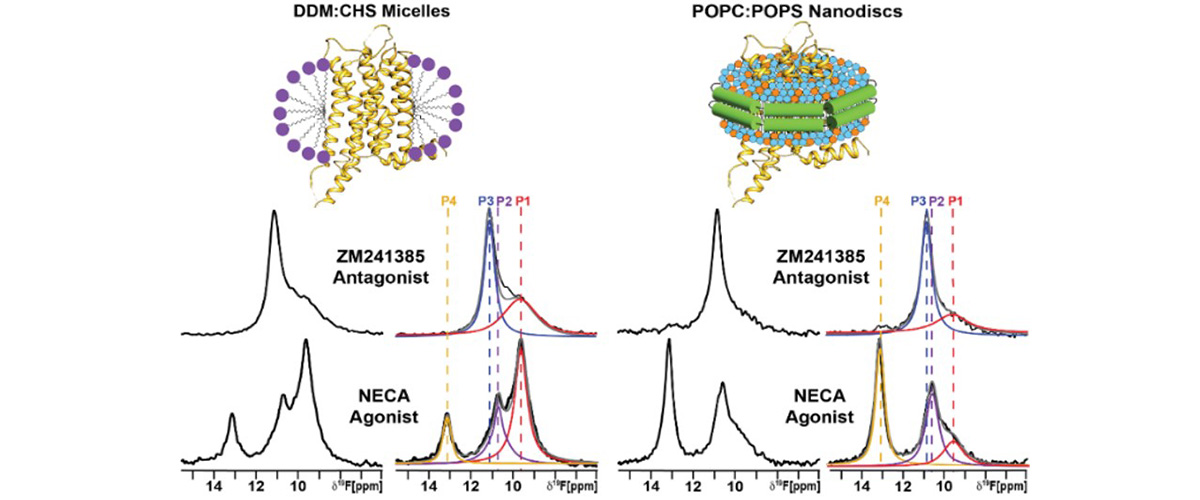What did scientists discover?
From 20 to 50 teslas, scientists found the electrical resistivity (for parallel electric and magnetic fields) to be nearly independent of magnetic field. This is highly unusual for a conventional metal, but consistent with the strange behavior of Weyl fermions. Above 50 teslas, scientists observed a two-order-of-magnitude increase in resistivity, indicating the destruction of the Weyl nodes by the opening of an energy gap. Above 80 teslas, they observed strong ultrasonic attenuation at temperatures below 2 Kelvin, suggesting a new, mesoscopically-textured state of matter.
Why is this important?
Fundamentally, strong spin-orbit coupled metals provide a wealth of new phenomena that are not known to exist outside of materials physics. The topological nature of the resulting states not only makes them robust against perturbation, but provides a possible bridge of the quantum-material to quantum-information chasm.
Who did the research?
B.J. Ramshaw,1, 2 K.A. Modic,3 Arkady Shekhter,4 Yi Zhang,2 Eun-Ah Kim,2 Philip J.W. Moll,3 Maja Bachmann,3 M.K. Chan,1 J.B. Betts,1 F. Balakirev,1 A. Migliori,1 N.J. Ghimire,5, 1 E.D. Bauer,1 F. Ronning,1 and Ross D. McDonald1
1Los Alamos National Laboratory, 2Laboratory of Atomic and Solid State Physics, Cornell University, 3Max-Planck-Institute for Chemical Physics of Solids, 4National MagLab, 5Argonne National Laboratory
Why did they need the MagLab?
Multiple measurements of the conductivity, sound velocity and attenuation above 90 teslas is only possible at the MagLab.
Details for scientists
- View or download the expert-level Science Highlight, Destruction of Weyl nodes and a New State in TaAs above 80 Teslas
- Read the full-length publication, Quantum limit transport and destruction of the Weyl nodes in TaAs, in Nature Communications
Funding
This research was funded by the following grants: G.S. Boebinger (NSF DMR-1157490, NSF DMR-1644779); B.J. Ramshaw (LANL LDRD-ECR20160616 “New States of Matter in Weyl Semimetals”); M.K. Chan (DOE-BES “Science at 100 T program”); R.D. McDonald (LANL LDRD-DR20160085 “Topology and Strong Correlations” );
For more information, contact Ross McDonald.






